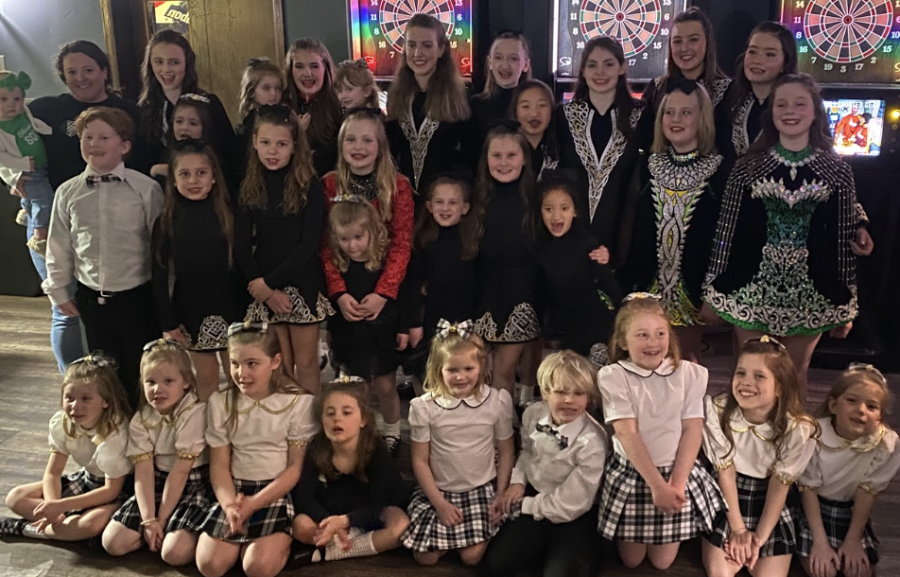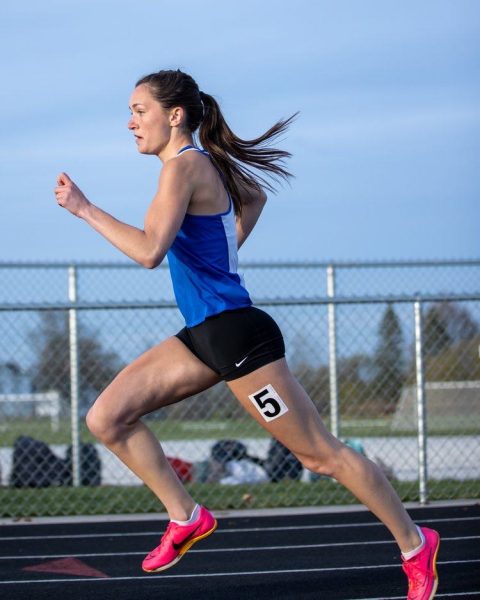Behind the Scenes of Saint Patrick’s Day!
One of March’s most popular holidays is Saint Patrick’s Day. Saint Patrick’s Day is mainly celebrated in America and Canada, however, Australia and the UK also celebrate it. The holiday celebrates Saint Patrick bringing Christianity to Ireland in the 15th century. Saint Patricks Day is known for many things like shamrocks, drinking, partying, and parades. In the midst of it all, a major aspect is Irish dancing. Irish dance originated from Celtic folk dancing and evolved with other influences. Irish dance is strongly related to the ancient culture and history of Ireland. During the 18th century, dancing was prohibited in Ireland by the British. In order to keep out of trouble at parties and still dance, the Irish would dance with their arms down so if a British soldier looked in from the outside it would seem as though they were walking. These parties were typically after church on Sundays. The girls would be in nice dresses and have their hair done-up all curly which is where the dancers’ elaborate costumes and curly hair originated. The dances are developed from traditional steps. Irish dancing is a fun way to celebrate Irish culture, heritage, and history along with entertaining thousands of people at performances.
You can find Irish dancers in pubs, churches, assisted living centers, and schools across the country during the month of March. Many dancers work for months in preparation for their Saint Patrick’s Day shows. Irish dance has two divisions of dancing: hard shoe and soft shoe. Hard shoe is referred to as more of a tap-like dance while Soft shoe is similar to ballet. In fact, Irish dance is not only entertainment for many, but also a sport and way of life. It is most popular in Ireland, the UK, Canada, America, and Australia and tens of thousands of children and adults are involved and love the art. There are competitions, called feiseanna, in which judges grade and place the dancers based on technique, posture, rhythm, costume, and so much more. Every feis has levels in which the dancer moves up through high placement in each of the dances. The dancers work hard to get to the ultimate goal of the annual World Championships. They must qualify to go to the regional or national competitions called Oireachtas. Most people outside of the Irish dance world have no idea that such a complex system exists and see it as jumping up on stage with a wig, dress, and makeup, but it is so much more.
I, personally, am an Irish dancer and have been since I was four years old. I have met many amazing people and had wonderful experiences. Some of my favorite memories are from Saint Patrick’s Day shows dancing at bars with my friends or at the world-famous Irish Fest in Milwaukee. Not only has dance taught me perseverance and patience and has allowed me to be creative and express myself, but I have been able to travel the world with my friends and family. I love dancing and would not trade it for anything.











